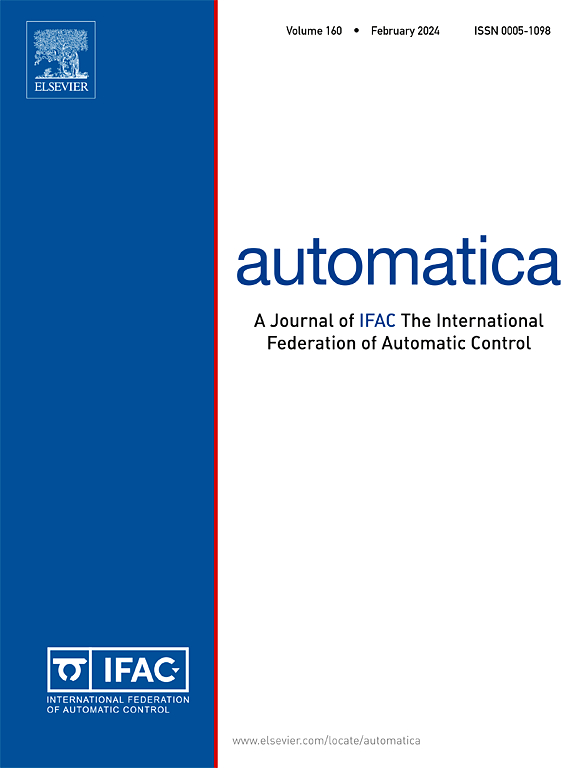可分控制李雅普诺夫函数的存在性及其神经网络表示
IF 5.9
2区 计算机科学
Q1 AUTOMATION & CONTROL SYSTEMS
引用次数: 0
摘要
在本文中,我们研究了神经网络在表示控制李雅普诺夫函数时减轻维数诅咒的能力。为了实现这一点,我们首先证明了用神经网络逼近可分离函数的误差界。随后,利用非线性控制理论的工具,讨论了可分控制李雅普诺夫函数存在的条件。这使我们能够弥合神经网络和控制李雅普诺夫函数近似之间的差距。此外,我们还提出了一个网络架构和一个训练算法来说明在10维控制系统上的理论发现。本文章由计算机程序翻译,如有差异,请以英文原文为准。
On the existence and neural network representation of separable control Lyapunov functions
In this paper, we investigate the ability of neural networks to mitigate the curse of dimensionality in representing control Lyapunov functions. To achieve this, we first prove an error bound for the approximation of separable functions with neural networks. Subsequently, we discuss conditions on the existence of separable control Lyapunov functions, drawing upon tools from nonlinear control theory. This enables us to bridge the gap between neural networks and the approximation of control Lyapunov functions. Moreover, we present a network architecture and a training algorithm to illustrate the theoretical findings on a 10-dimensional control system.
求助全文
通过发布文献求助,成功后即可免费获取论文全文。
去求助
来源期刊

Automatica
工程技术-工程:电子与电气
CiteScore
10.70
自引率
7.80%
发文量
617
审稿时长
5 months
期刊介绍:
Automatica is a leading archival publication in the field of systems and control. The field encompasses today a broad set of areas and topics, and is thriving not only within itself but also in terms of its impact on other fields, such as communications, computers, biology, energy and economics. Since its inception in 1963, Automatica has kept abreast with the evolution of the field over the years, and has emerged as a leading publication driving the trends in the field.
After being founded in 1963, Automatica became a journal of the International Federation of Automatic Control (IFAC) in 1969. It features a characteristic blend of theoretical and applied papers of archival, lasting value, reporting cutting edge research results by authors across the globe. It features articles in distinct categories, including regular, brief and survey papers, technical communiqués, correspondence items, as well as reviews on published books of interest to the readership. It occasionally publishes special issues on emerging new topics or established mature topics of interest to a broad audience.
Automatica solicits original high-quality contributions in all the categories listed above, and in all areas of systems and control interpreted in a broad sense and evolving constantly. They may be submitted directly to a subject editor or to the Editor-in-Chief if not sure about the subject area. Editorial procedures in place assure careful, fair, and prompt handling of all submitted articles. Accepted papers appear in the journal in the shortest time feasible given production time constraints.
 求助内容:
求助内容: 应助结果提醒方式:
应助结果提醒方式:


